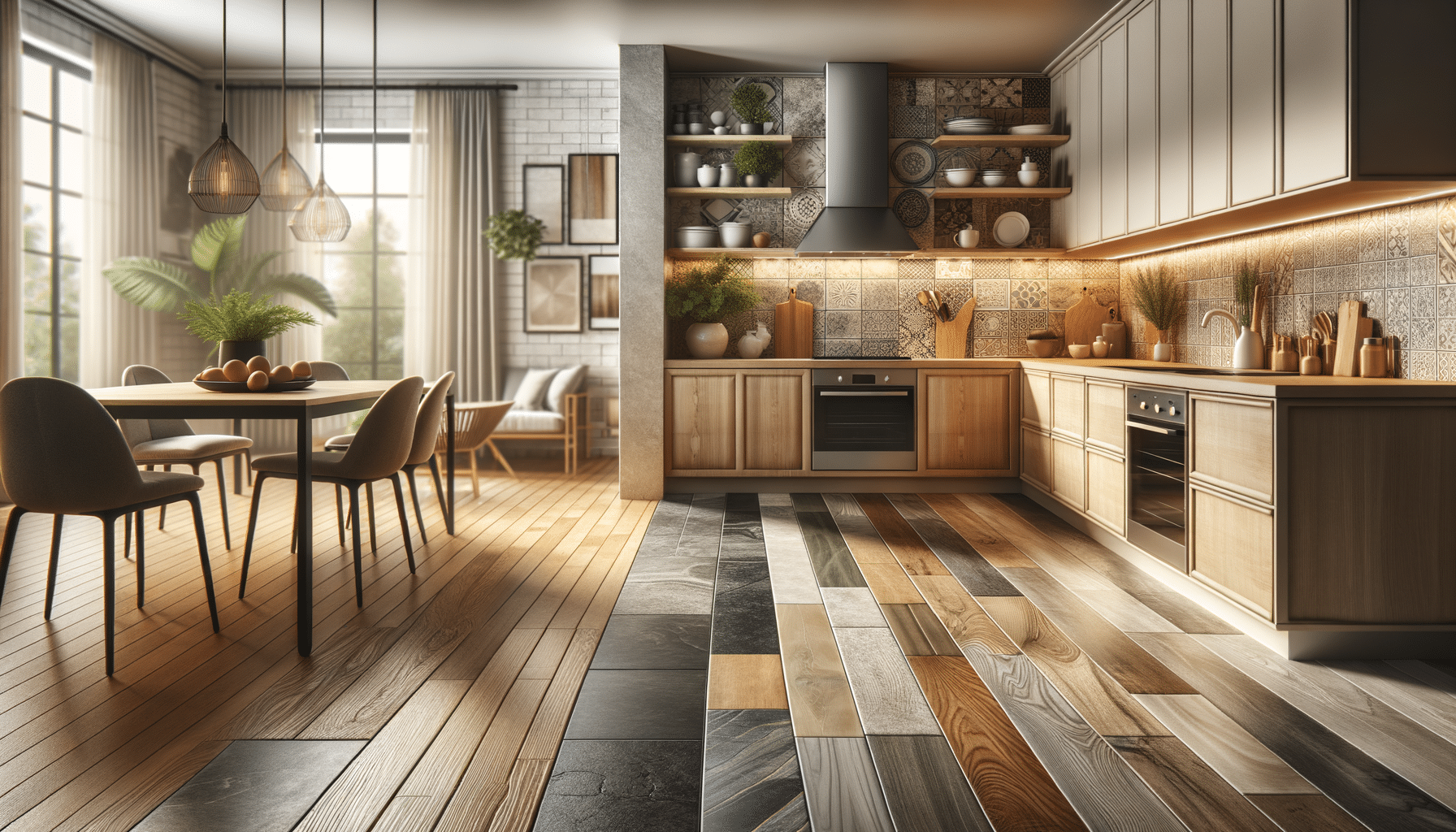
Stunning Kitchen Flooring Solutions That Fit Your Budget and Style
Introduction: The Importance of Choosing the Right Kitchen Flooring
When it comes to kitchen renovations, flooring is a crucial element that can significantly influence both the aesthetic appeal and functionality of the space. The kitchen is often the heart of the home, a bustling hub where family and friends gather, which means the flooring needs to withstand high traffic while also complementing your design style. Fortunately, you don’t have to break the bank to achieve a stunning look. This article will guide you through various kitchen flooring solutions that balance style, durability, and affordability.
Vinyl Flooring: A Versatile and Affordable Choice
Vinyl flooring has become an increasingly popular choice for kitchens due to its versatility and cost-effectiveness. This material offers a wide range of styles, from wood-like finishes to intricate tile patterns, allowing homeowners to achieve the look they desire without the hefty price tag. Vinyl is also known for its durability and water resistance, making it ideal for kitchen environments prone to spills and moisture.
One of the standout features of vinyl flooring is its ease of installation. Many vinyl options come with a click-lock system, enabling even DIY enthusiasts to lay down flooring with minimal hassle. Additionally, vinyl is comfortable underfoot, which can be a significant advantage for those who spend a lot of time standing in their kitchen.
For those concerned about sustainability, there are eco-friendly vinyl options available that use recycled materials. This makes vinyl not only a budget-friendly but also an environmentally conscious choice. Whether you’re aiming for a modern, rustic, or classic look, vinyl flooring offers a plethora of options to suit your style and budget.
Laminate Flooring: Style and Durability Combined
Laminate flooring is another excellent option for homeowners looking to enhance their kitchen without overspending. Known for its durability, laminate is resistant to scratches and stains, making it a practical choice for busy households. The surface of laminate flooring is designed to mimic the appearance of natural wood or stone, providing a high-end look at a fraction of the cost.
One of the benefits of laminate flooring is its low maintenance requirements. Regular sweeping and occasional mopping are generally sufficient to keep it looking pristine. This makes it a convenient option for those with hectic schedules who still want their kitchen to look polished and clean.
In terms of installation, laminate flooring is relatively simple to install, often featuring a floating floor system that snaps together without the need for nails or glue. This ease of installation can save on labor costs and make it an attractive option for DIY projects. With a variety of styles and finishes available, laminate flooring can effortlessly blend into any kitchen design, offering both beauty and resilience.
Ceramic Tiles: Timeless Elegance and Practicality
Ceramic tiles have long been a favorite for kitchen flooring due to their timeless elegance and practicality. Available in a vast array of colors, shapes, and sizes, ceramic tiles offer endless design possibilities, allowing homeowners to create unique and personalized kitchen spaces. The durability of ceramic tiles is unmatched, as they are resistant to water, stains, and scratches.
While ceramic tiles may require a higher upfront investment compared to vinyl or laminate, their longevity and minimal maintenance needs often justify the cost. Regular sweeping and mopping are typically all that’s needed to maintain their appearance. Additionally, ceramic tiles are a great option for those with allergies, as they do not trap dust or allergens.
For those concerned about cold floors, ceramic tiles can be paired with radiant floor heating systems to provide warmth and comfort. Whether you prefer a sleek modern look or a classic Mediterranean style, ceramic tiles can bring your vision to life while standing the test of time in terms of both style and durability.
Engineered Wood: A Warm and Inviting Option
Engineered wood flooring offers the warmth and beauty of natural wood with added stability and resistance to moisture. This makes it an excellent choice for kitchens, where traditional hardwood might not be suitable due to humidity and temperature fluctuations. Engineered wood consists of a top layer of real wood veneer bonded over layers of high-quality plywood, providing both aesthetic appeal and structural integrity.
The installation of engineered wood is typically straightforward, with many products featuring click-lock systems that make it accessible for DIY enthusiasts. This type of flooring can also be sanded and refinished, extending its lifespan and preserving its appearance over time.
While engineered wood may come at a higher price point compared to vinyl or laminate, its natural beauty and ability to increase home value can make it a worthwhile investment. Its ability to complement various kitchen styles, from rustic farmhouse to sleek contemporary, ensures that engineered wood remains a popular choice for those seeking a balance of elegance and practicality.
Conclusion: Finding the Perfect Kitchen Flooring
Choosing the right kitchen flooring involves considering factors such as budget, style, and durability. With options ranging from budget-friendly vinyl and laminate to the timeless elegance of ceramic tiles and engineered wood, there is a solution for every homeowner. By evaluating your specific needs and preferences, you can select a flooring option that enhances the beauty and functionality of your kitchen without overspending.
Remember, the key to a successful kitchen renovation lies in balancing aesthetics with practicality. Whatever your choice, the right flooring can transform your kitchen into a stylish and inviting space that withstands the demands of daily life.


